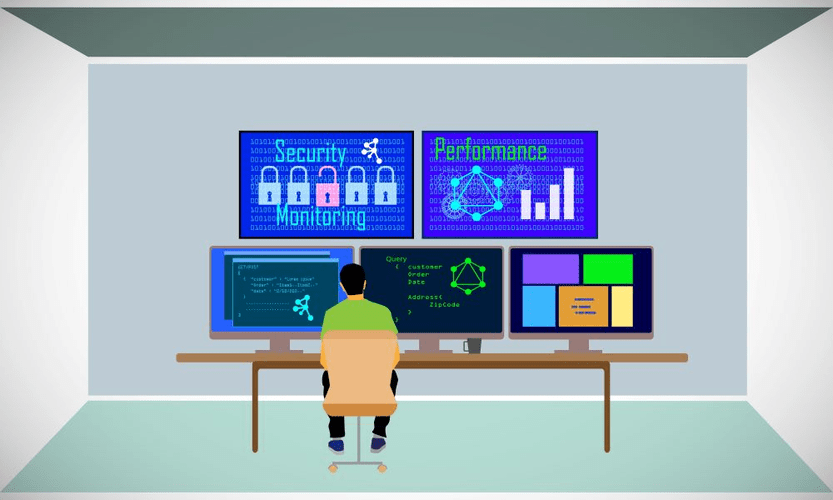And the importance of fixing it should be a shared mindset in the culture. Feature flags are an if condition determining whether to run the new code or not. That way, when you integrate the code, the rest of the team has a chance to review it. It was a good learning for me and made me think about how can I create something which is more relevant to my organization. Objective of this article is to learn how to define CI/CD Maturity model which fits your organizations needs. 19% of respondents in your category said they deploy code to production weekly.

There may be concerns of teams ‘gaming’ the metric with story point inflation, but as with all metrics, they should be viewed in context by experienced folks who know the teams well. And if this is the case, they can stil give an excellent view of how the delivery organisation is progressing over time. Many of us are aware of the benefits that a strong focus on automation can bring, particularly in our development workflow and DevOps lifecycle. But silos across businesses can lead to duplication of effort, and potential to lose out on best practices. In this post, we’ll explore how CI/CD can be shared across your entire organization alongside policies, for a well-governed experience with GitHub Actions. When you need to roll back a release to a previous application version, automation makes it much easier to do so quickly.
CI / CD — A Guide to Maturity
In fact, there is more to it – it also provides direction to achieve higher levels of maturity, thus, helping you reach where you should aim instead of massaging complacence. Everyone in the team is responsible for creating a safer, quicker, and deterministic delivery pipeline continuously. As the saying goes, “if it hurts, do it more often.” Usually, every time a deployment happens, the application’s stability is at risk. But the problem with that approach is that we end up accumulating many changes. Chances are that one of those changes might have problems, forcing us to roll back the other changes that were working.

The company does not need to pass these levels sequentially and can use them as a base for evaluation and planning instead. Moving to expert level in this category typically includes improving the real time information service to provide dynamic self-service useful information and customized dashboards. As a result of this you can also start cross referencing and correlating reports and metrics across different organizational boundaries,. This information lets you broaden the perspective for continuous improvement and more easy verify expected business results from changes. At the base level in this category it is important to establish some baseline metric for the current process, so you can start to measure and track. At this level reporting is typically done manually and on-demand by individuals.
Advancing from continuous delivery to continuous deployment
Continuous improvement mechanisms are in place and e.g. a dedicated tools team is set up to serve other teams by improving tools and automation. At this level, releases of functionality can be disconnected from the actual deployment, which gives the projects a somewhat different role. A project can focus on producing requirements for one or multiple teams and when all or enough of those have been verified and deployed to production the project can plan and organize the actual release to users separately.
MLOps is an ML engineering culture and
practice that aims at unifying ML system development (Dev) and ML system
operation (Ops). Practicing MLOps means that you advocate for automation and
monitoring at all steps of ML system construction, including integration,
testing, releasing, deployment and infrastructure management. At Devbridge, we recognized the value of complete deployment automation and resolved to include continuous deployment as part of our processes and best practices. As a first step, we explicitly took inventory of the build process to pave the way for successful continuous deployment. Building a CI/CD-enabled organization is a journey, and there are many destinations along the way.
Reasons to Choose Kotlin Development Company for Your Project
To check for this, access reports that offer more information on why the test is failing. Once you identify a cause, try to reproduce the failure by rerunning the test or just manually reproducing it with the application under test. Broken builds can be red flags for larger issues and also signify impediments to current — and future — workflows.

At this advanced level, teams also tackle harder deployment problems, such as multi-tier applications in which several components must deploy together, but are on different release cycles. These composite applications also include more sophisticated components, notably databases, that are complicated to deploy and test. A maturity model describes milestones on the path of improvement for a particular type of process. In the IT world, the best known of these is the capability maturity model (CMM), a five-level evolutionary path of increasingly organized and systematically more mature software development processes.
How GitHub uses GitHub Actions and Actions larger runners to build and test GitHub.com
A devops engineer uses a CI/CD tool such as Jenkins, CircleCI, AWS CodeBuild, Azure DevOps, Atlassian Bamboo, Argo CD, Buddy, Drone, or Travis CI to automate the steps and provide reporting. Most CI/CD tools let developers kick off builds on demand, triggered by code commits in the version control repository, or on a defined schedule. Teams need to determine the build schedule that works best for the size of the team, the number of daily commits expected, and other application considerations. A best practice is to ensure that commits and builds are fast; otherwise, these processes may impede teams trying to code quickly and commit frequently. Many teams use feature flags, a configuration mechanism to turn features and code on or off at runtime. Features that are still under development are wrapped with feature flags in the code, deployed with the main branch to production, and turned off until they are ready to be used.
- Continuous delivery is an automated way to push code changes to these environments.
- A best practice is to ensure that commits and builds are fast; otherwise, these processes may impede teams trying to code quickly and commit frequently.
- By following these best practices, organizations can implement a CDMM that helps them to achieve higher levels of maturity and to deliver software changes quickly and reliably, with minimal risk and downtime.
- But wherever you are on your CI/CD journey, there are a few things you can do to level up your CI/CD pipeline.
- To develop and operate complex systems like these, you can apply DevOps
principles to ML systems (MLOps).
This setup is suitable when
you deploy new models based on new data, rather than based on new ML ideas. Each stage of the CI/CD pipeline cicd maturity model is structured as a logical unit in the delivery process. In addition, each stage acts as a gate that vets a certain aspect of the code.
Continuous integration
Because every one of your customers should be valuable to you—and if even just a fraction of your customers have trouble using your product, that matters. There’s another class of tools that can help you automate visual regression testing to make sure you haven’t changed the UI when you weren’t intending to do so. With that, here are six strategic things I often see missing from CI/CD pipelines that can help any developer or team advance and improve their workflows. The principles and methods of Continuous Delivery are rapidly gaining recognition as a successful strategy for true business agility. ” How do you start with Continuous Delivery, and how do you transform your organization to ensure sustainable results. This Maturity Model aims to give structure and understanding to some of the key aspects you need to consider when adopting Continuous Delivery in your organization.

This kind of strategy is common among organizations using Kubernetes. You may have a number of pods that are running and when you do a deployment, Kubernetes will deploy updates to new instances and redirects traffic. The management of which ones are up and running operates under the same principles as blue-green deployments—but you’re also navigating a far more complex architecture. When it comes to releasing a new version of an application, what’s one word you think of? For me, the big word is “stress” (although “excitement” and “relief” are a close second and third). Blue-green deployments are one way to improve how you roll out a new version of an application in your CI/CD pipeline, but it can also be a bit more complex, too.
Stage 5: DevOps experts optimize CD
You can get everything set up in the environment and then just point people to a new one. As you get closer to production in a phased testing model, you’ll want to test more and more things. This will likely include key items such as regression testing to make sure previous bugs aren’t reappearing in your codebase. But you’ll want to effectively catch the big things early and then narrow your testing down to ensure you’re shipping a very high-quality application. Often, developers will put all or most of their automated testing at the build phase in their CI/CD pipelines. And while there’s nothing necessarily wrong with this, you may find that it takes longer to get feedback on your code.
